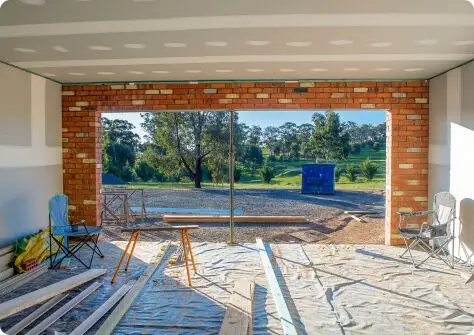Trusted by over 1.7k happy people


According to fire and rescue incident statistics for England for the year ending June 2020, the Fire and Rescue Services (FRS) attended approx 156,000 fires, with 231 of people affected by those fires unfortunately ending in a fire-related fatality and 6714 suffering non-fatal casualties.
Considering these facts makes it easier to see why complying with the legislation around Fire Risk Assessments and other fire safety practices is vital - to protect people from preventable harm and save lives.
The Regulatory Reform (Fire Safety) Order 2005 is the legislation that guides fire safety in commercial property in England and Wales, it outlines key rules such as:
In fire safety legislation the terms “responsible person”, “relevant person”, and “competent person” are used to set out who has the duties, is potentially at risk, and can carry out assessments in relations to fire safety. In order to comprehend the regulations it’s important to understand who each of these people are or can be.
In Part 1 Article 3 and Part 1 Article 5 of the Fire Safety Order 2005 we learn that the responsible person is anyone in control of a non-domestic premises. This can be:
In regards to this legislation a relevant person is anyone who is or may be in or in the immediate vicinity of the property in question, meaning anyone who could be affected if there was a fire at the property, for example:
While specific qualifications or skills for the competent person aren’t set out in Pt 2 Art. 18 it is required that the person shows competency on or higher than the level of complexity of the risks of the property to be assessed. This means that for particularly small or uncomplex properties the responsible person can carry out a fire risk assessment themselves with the help of standard fire safety risk assessment guides, however it is advised to have a “competent” professional risk assessor carry out the FRA where expertise or time is lacking, especially for properties/businesses that are not very basic.
As well as various other regulations regarding fire safety, The Regulatory Reform Order 2005 tells us that…
The responsible person has a legal duty to make (or instruct) a “suitable and sufficient” assessment of any potential fire risks that relevant people are exposed to. The purpose of this risk assessment is to identify the general precautions they must take to comply with prohibitions or requirements set out by the Order.
This risk assessment must be kept up to date, and amended especially if there is reason to suspect that it is no longer valid, for example if there has been a change to the use, occupancy levels, layout or envelope of the property.
If a dangerous substance is in or is liable to be in the property, this must be taken into account in the assessment. Please note: no work involving a dangerous substance can go ahead unless this risk assessment has been made and measures highlighted in the Order are implemented.
As of 2023, Fire Risk Assessments must be recorded regardless of how many staff are employed in the building.
As well as all non-domestic properties, anyone responsible for a property that isn’t a “single private dwelling” must have a suitably competent person complete a FRA. This means that the Order is relevant to any person in control of a property that contains two or more domestic dwellings (i.e. blocks of flats, a house converted into flats) as the common areas* are counted as non-domestic, and also if a property has paying guests such as bed and breakfasts, guesthouses and self-catering properties.
*“Common areas” include entrance doors to individual flats, hallways, lifts and shafts, stairwells, roof spaces, gardens, outhouses, and garages in domestic properties like flat blocks and houses converted into flats, meaning domestic landlords must also be aware of the Regulatory Reform Order 2005 regulations (as well as various others such as The Smoke and Carbon Monoxide Alarm Regulations 2015 and the Housing Act 2004 for regulations inside of the home).
It’s an offence to fail to have a Fire Risk Assessment (that is written down if necessary), this offence can be punished by either a fine up to £5000 for minor penalties, or unlimited fines and up to 2 years in prison for major penalties (Pt 4 Art. 32). You can learn more about notices and appeals here.
Request your no obligation Fire Risk Assessment quote now by calling our freephone on 0800 170 1201 to speak to one of our admin team or clicking here to get in touch (Office Hours are Mon - Fri 9-5:30 excl. Bank Holidays).
The objectives of a Fire Risk Assessment are to identify all potential fire hazards and their risks, then provide control measures or precautions to reduce the risks from these hazards where necessary.
An Easy EPC Fire Risk Assessment is completed by one of our competent fire risk surveyors and highlights any hazards and their risks found and gives an overall risk rating of the property in question, along with how soon any actions need to be carried out and the timescale of the next review. In addition to this different parts and services of the property will be categorised as no intervention needed, intervention & action plan needed, or not applicable. If any intervention is advised in any FRA, then these will need to be addressed in the first instance. Failure to do so puts yourself and others at risk and also makes any insurance void in the event of an incident.
Instructing a competent person to carry out a Fire Risk Assessment can be the easiest, most time efficient, and least stressful way for a responsible person to comply with the Fire Safety Order (2005), taking away the time consuming and often daunting task of identifying and deciding what to do about all fire hazards in a property, and giving it to a trained and experienced professional risk assessor.
As an owner of a commercial property you along with any other person who is classed as a responsible person (an employer, landlord, occupier, or anyone in control of the premises) have a legal duty to work together to ensure that all fire safety responsibilities are met, including keeping an up to date Fire Risk Assessment recorded.
This is still applicable even if your property is currently empty, although it needn’t be written down if it has less than 5 regular occupants/employees.
It’s important to note that as a landlord as well as Fire Risk Assessments, there are many other ways you must do or consider to comply with fire safety law.
If your domestic property is not a “single private dwelling” - for example a block of flats or house converted into flats is not a single private dwelling - then you will also need to comply with the Fire Safety Order 2005. Common areas such as shared hallways, entrance halls, stairways, lift shafts, garages, etc. will need to have a Fire Risk Assessment that includes the individual entrance doors (“front doors”) to each flat.
It’s important to note that as a landlord you must also comply with various other fire safety regulations such as The Smoke and Carbon Monoxide Alarm Regulations 2015 and the Housing Act 2004.
As a landlord of a commercial property you along with any other person who is classed as a responsible person (an employer, landlord, occupier, or anyone in control of the premises) have a legal duty to work together to ensure that all fire safety responsibilities are met, including a Fire Risk Assessment (which must be kept written down if the building has 5+ regular occupants/employees, a license under a an enactment is in force, or there is an alterations notice requiring this is in force).
This is still applicable even if your property is currently empty, although it needn’t be written down if it has less than 5 regular occupants/employees.
It’s important to note that as a property owner, there are many other things you must do or consider to comply with fire safety law as well as Fire Risk Assessments.
If you own and occupy your own single private dwelling then you are not legally responsible to complete or instruct a fire risk assessment on the property, although you may want to for your own peace of mind - 183 fire related fatalities (of the 231 that occured in the year ending June 2020) were in dwellings.
If you are the owner of a domestic property where you have paying guests (like in a B&B, guest house, or self-catering property) then you will need to comply with The Fire Safety Order and have a fire risk assessment.
If you are buying or looking to buy a commercial property then you should be aware that you (along with various other people such as employers, occupiers, etc. as applicable) will legally have the responsibility to complete/keep an up to date Fire Risk Assessment. To learn more about The Responsibilities in regards to Fire Risk Assessments please see “The Regulations” and in particular “What the responsibilities are”, which you can find further up on this page.
If you are buying a domestic property then there is no legal obligation for you to get a domestic fire risk assessment*.
*If you are buying a domestic property that is not a single private dwelling (such as a block of flats, a house converted into flats, or if you will have paying guests like a B&B or self-catering property) then you will be legally responsible for having an up-to-date FRA for the common areas in the property (hallways between flats, stairwells, garages, lift shafts, individual flat doors, etc.).
For more information on Fire Risk Assessments with Easy EPC please click here to visit our Fire Risk Assessment page, or alternatively you can contact 0800 170 1201 and ask for Chloe to speak to our FRA Manager.

